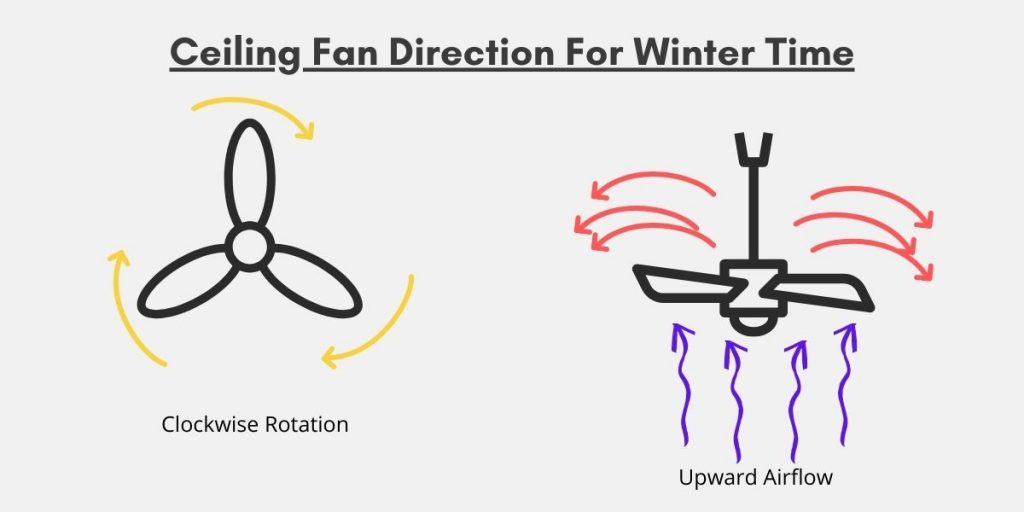
Read more about what the switch is for on a ceiling fan. Flip the switch to change the direction of the fan. If you have an older model of a fan, then look for a tiny toggle switch that might be positioned on the motor housing. Most new ceiling fan models are equipped with remote control units or wall controls which help to change the direction of the blades. How do I control the direction of the blades on my ceiling fan? You will not feel the breeze when the blades are rotating in the counter clockwise direction. The blades will pull the air up and around, bringing the warm air that rises to the ceiling. In the counter clockwise or left direction, you should be able to feel a cooling breeze under it. Your ceiling fan direction in the winter should rotate clockwise. One of the easiest ways to know if the ceiling fan direction is clockwise or counter clockwise is to stand under it. In the counter-clockwise motion, the blades turn left. Which way is clockwise on a ceiling fan?Ĭlockwise is when the blades of the fan turn right like the hands of a clock. However, the conundrum that most home owners face is being unable to distinguish between ceiling fan blade direction when it is switched on. If you have a cathedral styled ceiling or a vaulted one that is more than the typical 8-10 feet height, then you can keep the ceiling fan in the counter-clockwise setting all year round. What is the correct ceiling fan direction for vaulted ceilings?Ī fan mounted on a vaulted ceiling, irrespective of whether it is an arched one or not, is positioned at a height that makes it impossible to create a notable wind chill effect.Įven if you keep the fan speed high during summers, you will find that it does not make a significant difference in helping cool the room. Read more about why ceiling fans can really help in winter. The only exception to this rule is if it is a vaulted ceiling fan. Whats the best ceiling fan direction for spring and fall Run your fan counterclockwise and adjust your speed Clean your fan when you switch directions. Once again, you can reduce your thermostat temperature and cut down on heating bills. Reversing the motion of the ceiling fan blades clockwise pushes the warm air downwards making the room warmer. Which leads us on to the opposite question if you want warm air distributed throughout your room… Which way should a ceiling fan turn in winter?ĭuring winter, the warm air in the room rises naturally to the ceiling and is often concentrated there. It will at best, augment the air conditioning system, making it more efficient. Please bear in mind that merely turning a ceiling fan on does not cool the room. According to the EPA, even a nominal 2 degree increase in thermostat temperature during summer can help you save up to 15% on energy costs. This in turn, allows you to set your thermostat at a higher temperature and still keep the room cool.

Ever rolled down the glass of your car window and felt the cool breeze on your face? That’s wind chill for you. This creates an effect called ‘wind chill’ which helps you feel cooler by enhancing the rate of sweat evaporation on your skin. 3.2 How do I control the direction of the blades on my ceiling fan? Which way should a ceiling fan turn in the summer?ĭuring summer, the blades of the ceiling fan should turn counter-clockwise so that it produces a downward breeze when you stand under the fan.3.1 Which way is clockwise on a ceiling fan?.3 What is the correct ceiling fan direction for vaulted ceilings?.If you don't, your fan is spinning clockwise. You should also feel air movement while standing under the fan. They should move from the top left, then down to the right, and then back up to the top. 2 Which way should a ceiling fan turn in winter? You can tell if your ceiling fan is spinning counterclockwise by watching the way the blades rotate.1 Which way should a ceiling fan turn in the summer?.

You should feel cold air pushing down on you when you stand underneath the fan. Or your ceiling fan might come with a remote or app that you can use to change the direction. Solution: Find the direction switch on your ceiling fan and make sure its setting is counterclockwise (the switch should go down) during the summer. You'll be uncomfortable if you don't set the correct direction for the season since the fan will spin opposite your desired temperature goals. In contrast, fan blades running clockwise push down any hot air that naturally rises to the ceiling, helping people stay warm. This creates a windchill effect that cools people. When the fan blades run counterclockwise, they blow and push air downwards.


 0 kommentar(er)
0 kommentar(er)
